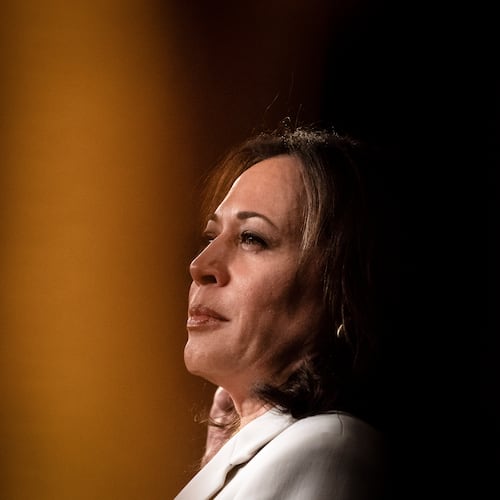Gov. Brian Kemp’s latest coronavirus order, issued late Tuesday, sets up a framework to allow visitors to return to long-term care facilities.
The order will provide some comfort to loved ones who have complained about the inability to see family members in the facilities during the pandemic, but comes as Georgia still faces higher rates of infection and deaths among the state’s most vulnerable citizens.
The governor’s 51-page order says a shelter-in-place order would be in effect for residents of the facilities, and sets up a three-phase system for in-person visits based on the rate of coronavirus testing, the length of time the home has gone without a new case and other factors such as community spread.
It also renews other elements of previous orders, such as a ban on gatherings of more than 50 people unless social distancing is in force, as well as guidelines for restaurants, bars and other businesses to follow in order to stay open.
Kemp also keeps intact rules that empower local governments and school districts to impose mask requirements, though Kemp continues to oppose a statewide mandate for face coverings. The new order expires Sept. 30.
It does not include a new definition of teachers as “critical” workers, which would exempt them from a two-week quarantine required of most people who are exposed to the COVID-19 virus. Kemp has publicly struggled about whether to take the step.
Kemp signed the order amid improving state health data. The number of newly reported cases has fallen steadily since mid-August, as has the hospitalization rate from the disease. But public health experts and the White House coronavirus task force warn improvements can be erased without aggressive action.
And state officials are worried about a new wave of infections as students return to school and others return to a semblance of normalcy. Kemp took the rare step last week to urge all Georgians — particularly those who engaged in large Labor Day weekend gatherings — to get tested for the disease.
Senior homes remain hot spots
Despite progress elsewhere, containing the disease in Georgia’s nursing homes, assisted living communities and large personal-care homes has remained a stubborn challenge for state public health officials.
August was the worst month yet for COVID-19 deaths and infections at those facilities. As of Monday, 13,859 residents of long-term care homes have tested positive for the disease and 2,407 have died. That’s about 38% of the state’s total deaths from the disease. Another 7,200 employees of the facilities have contracted the illness, state data shows.
However, the state’s count doesn’t provide a complete picture of the toll the coronavirus is taking in senior care facilities. The health department isn’t tracking cases and deaths of hundreds of long-term care facilities across the state — those with fewer than 25 beds. Thousands of Georgians live in those facilities.
Georgia nursing homes have been in lockdown since March, and many families are torn over whether they should be reopened.
For months, Kemp’s orders placed restrictions on long-term care settings because COVID-19 can be so deadly for seniors, especially those with health issues. Along with prohibiting visitors, the order said senior care homes should provide in-room dining and cancel all group activities.
Credit: HYOSUB SHIN / AJC
Credit: HYOSUB SHIN / AJC
Providers recognize the importance of resuming family visits, but they want to ensure that it doesn’t lead to spread of the virus, said Ginny Helms, president of LeadingAge Georgia, which represents non-profit facilities across the state.
About 15 states have announced plans and offered guidance to resume visits, said Helms, who encouraged mask-wearing, social distancing and screening visitors as critical elements for a successful program.
Families must also ensure they don’t spread the virus to loved ones during a visit, she said, something that has happened in recent months during outdoor visits when precautions weren’t followed.
“We know it’s important for residents and family to see each other,” she said. “But we really need to keep them safe during these visits.”
The framework outlined by the Department of Public Health allows only limited visits, such as end-of-life situations, for facilities in “phase one.” They’re defined as homes still under “vigilant infection control” during periods of heightened virus spread in the community.
Facilities that have reached “phase three” — homes that have gone 28 days without a coronavirus case in counties with low positivity rates — can allow all residents to have limited visitation.
Teresa Williams said she was encouraged by steps to resume in-person visits with her father, Maurice Collier, who is 91 and lives in an assisted living center about five miles from her house in Snellville.
About a month ago, the Sunrise of Webb Gin in Gwinnett County started allowing 30-minute-long courtyard visits outside with required masks and physical distancing.
“It sure beats a computer screen or visiting by a window,” said Teresa Williams, who said her father is now able to participate in smaller-scale physically-distanced activities."I can see a difference. He definitely does better when he can see me in person."
Kemp’s order also allows representatives of the state’s Long-Term Care Ombudsman’s Office to enter facilities for the first time in six months.
Melanie McNeil, who heads the office, said advocates will be ready to visit homes and speak with residents and management after completing training on the proper use of PPE. The order was a relief for the advocates, whose ability to look into complaints has been limited during the pandemic.
“Our ombudsman representatives have been so concerned about the residents that they serve,” McNeil said.
Staff writers Helena Oliviero and Brad Schrade contributed to this report.
The Latest
Featured






